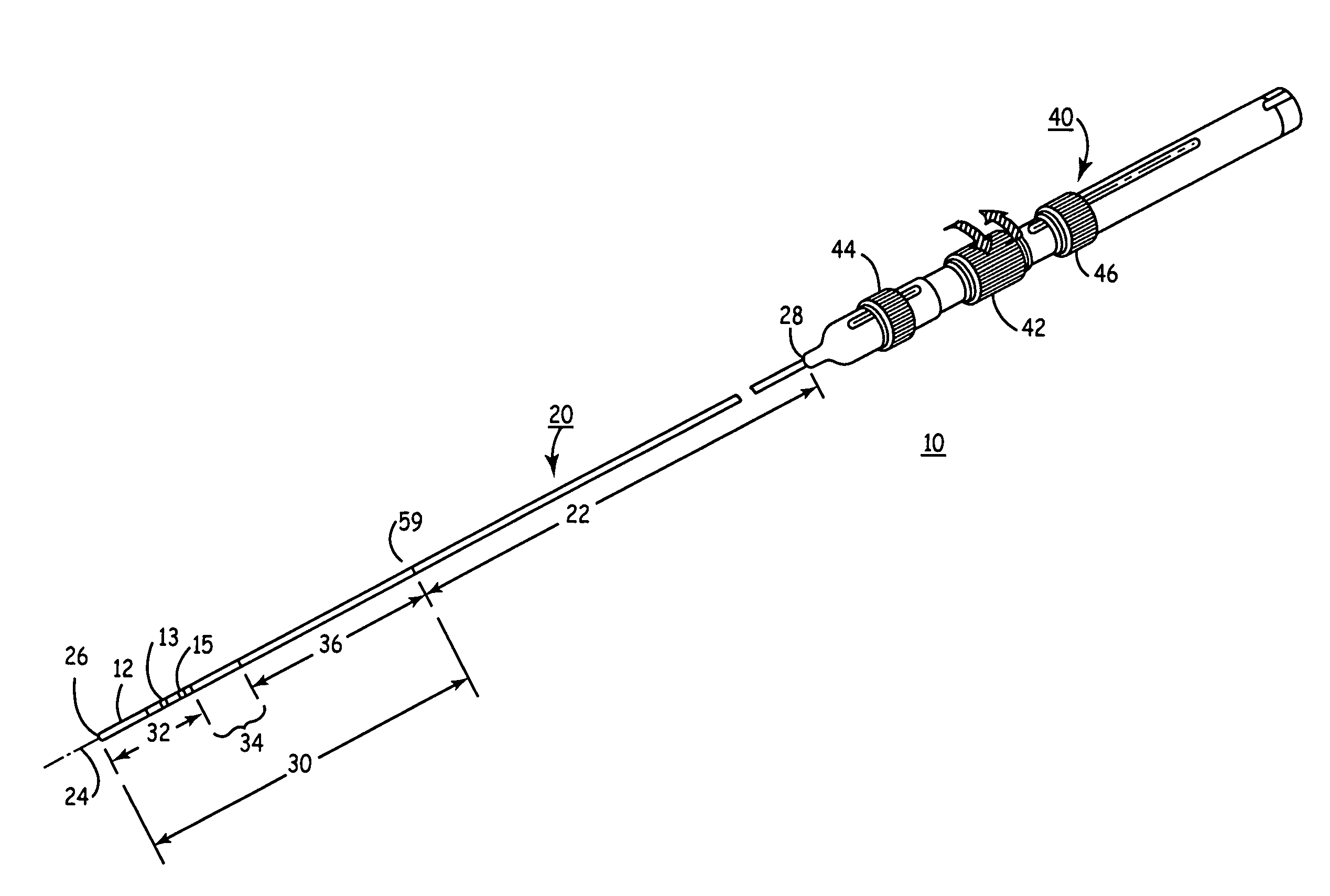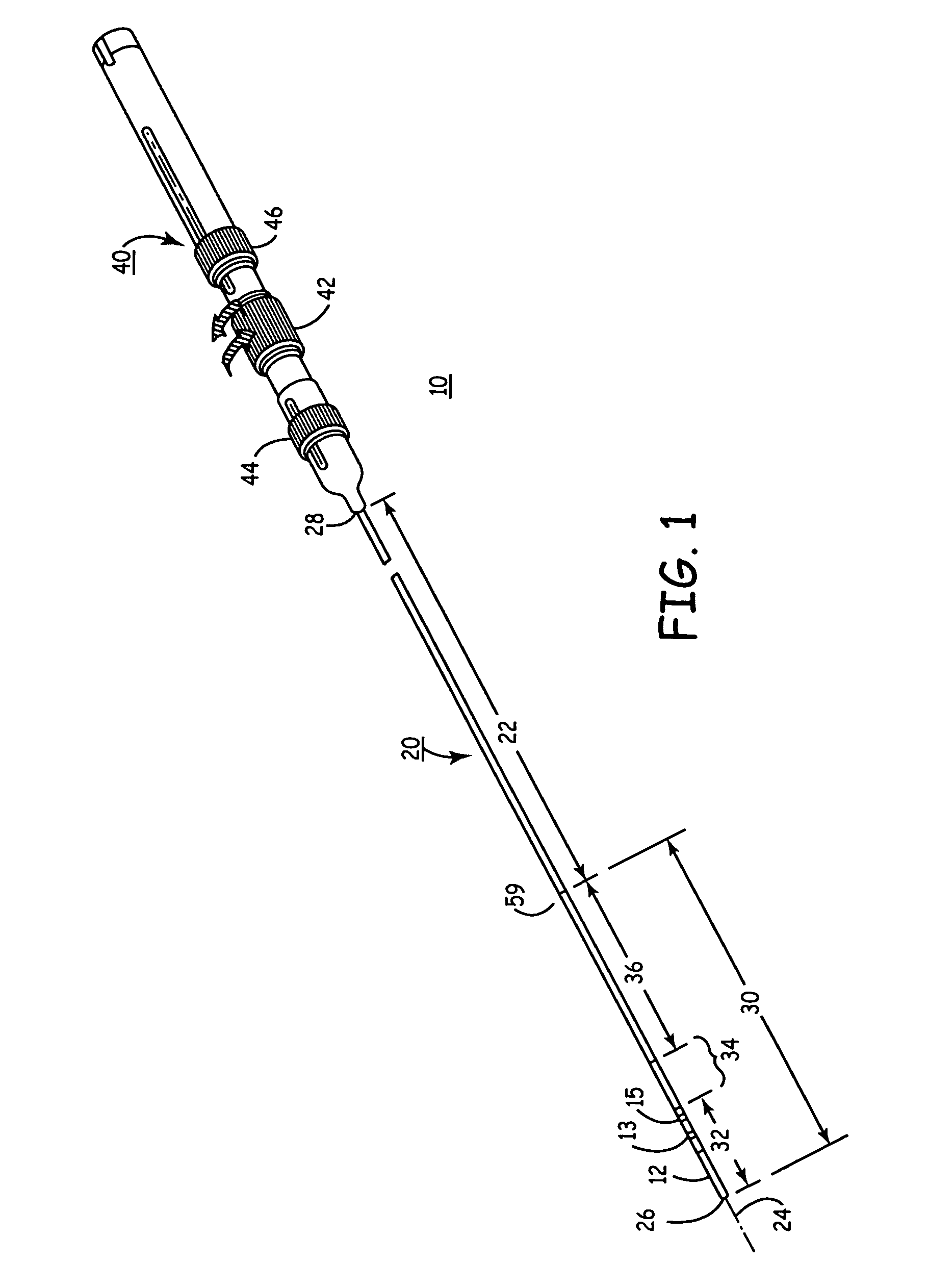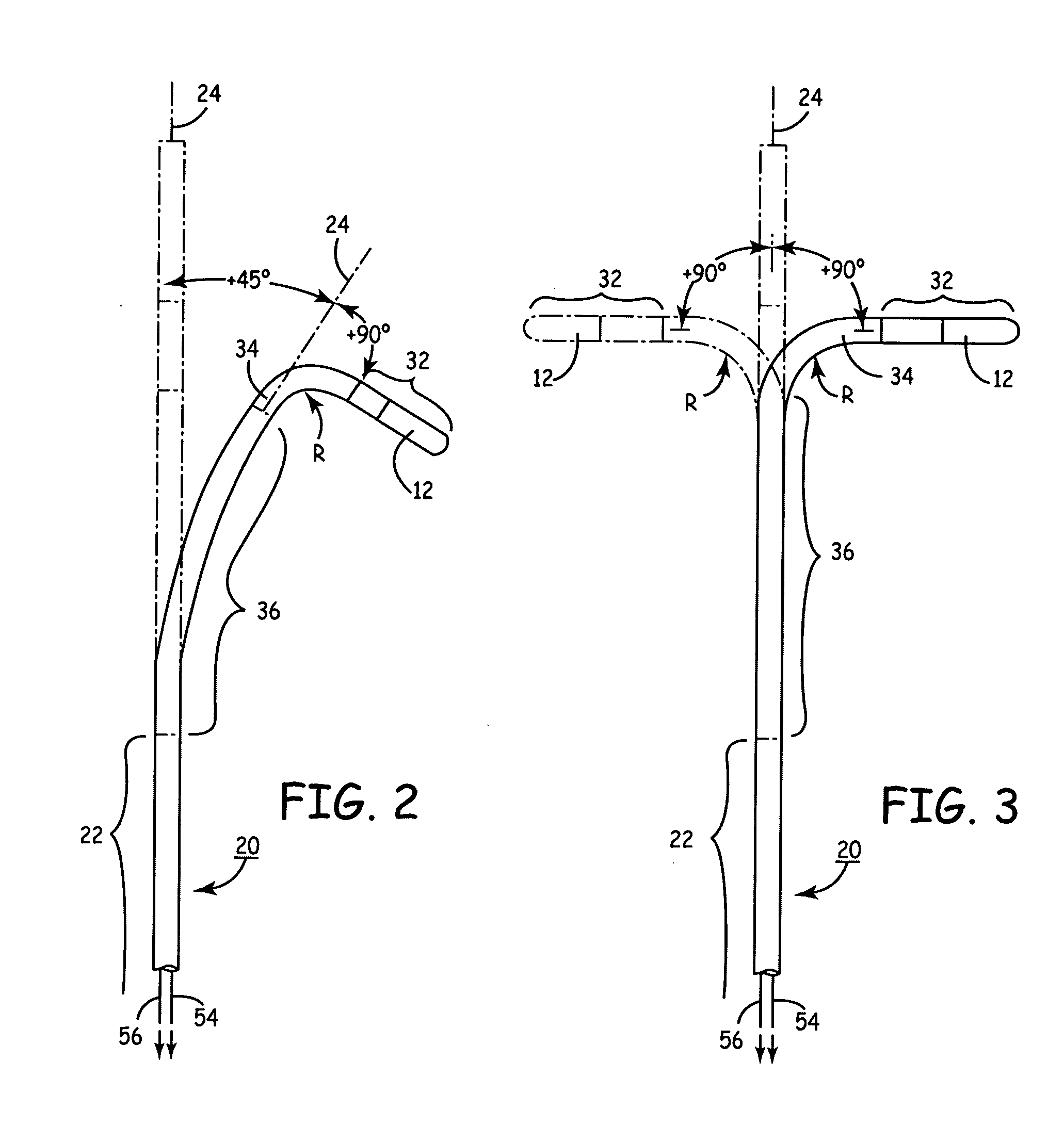Heart wall ablation/mapping catheter and method
a catheter and catheter technology, applied in the field of catheters, can solve the problems of ignoring symptoms, unable to cure the underlying, and requiring implantable electrical stimulators,
- Summary
- Abstract
- Description
- Claims
- Application Information
AI Technical Summary
Benefits of technology
Problems solved by technology
Method used
Image
Examples
Embodiment Construction
[0037]FIG. 1 schematically illustrates an anatomically-conforming, multi-curve catheter 10 incorporating various features of the present invention for orienting a distal tip electrode 12 (or electrodes) with respect to the heart wall for RF ablation and / or EP mapping. The multi-curve catheter 10 can incorporate a porous tip and catheter lumen for emitting irrigating fluid around the distal tip electrode 12, but those features are not illustrated in FIG. 1 to simplify illustration. Moreover, the distal segment 32 is simplified in FIG. 1 to show an elongated tubular shaped ablation electrode 12 and a pair of mapping electrodes 13 and 15 in the illustration of FIG. 1, but the distal segment 32 may comprise a plurality of ring-shaped electrodes, one or more coil electrode or the like having other shapes that are presently used or may come into use and including several variations described below in reference to other figures. It will be understood that the catheter 10 also represents an...
PUM
 Login to View More
Login to View More Abstract
Description
Claims
Application Information
 Login to View More
Login to View More - R&D
- Intellectual Property
- Life Sciences
- Materials
- Tech Scout
- Unparalleled Data Quality
- Higher Quality Content
- 60% Fewer Hallucinations
Browse by: Latest US Patents, China's latest patents, Technical Efficacy Thesaurus, Application Domain, Technology Topic, Popular Technical Reports.
© 2025 PatSnap. All rights reserved.Legal|Privacy policy|Modern Slavery Act Transparency Statement|Sitemap|About US| Contact US: help@patsnap.com



